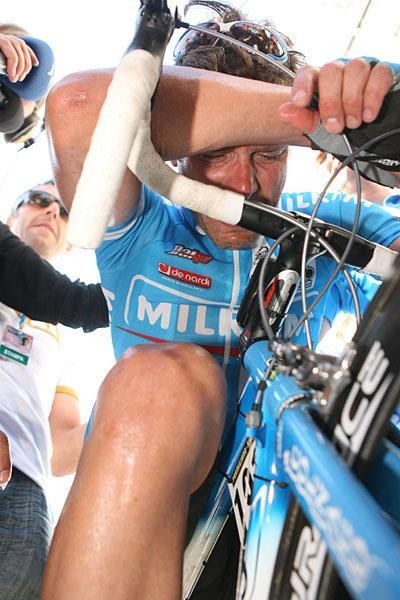Innocently guilty – the Petacchi case
By Susan Westemeyer If Alessandro Petacchi is asking the question, "why me?", it would not be...

By Susan Westemeyer
If Alessandro Petacchi is asking the question, "why me?", it would not be surprising. The Milram sprinter drew a one-year sanction for taking too much of an asthma medication he was allowed to use, while other riders have escaped punishment for the same offense.
Alessandro Petacchi "is not a cheat," the Court of Arbitration for Sport stated this week after ruling that the Italian must serve a one-year suspension. It found that his positive doping test during the 2007 Giro d'Italia was "the result of Mr. Petacchi simply, and, possibly, accidentally, taking too much Salbutamol on the day of the test, but that the overdose was not taken with the intention of enhancing his performance." Nevertheless, even though he was allowed by the UCI to use the drug, he was responsible for taking too much and the CAS decided that this warranted a sanction.
The case parallels that of Leonardo Piepoli, who tested positive for the same drug on the same day, and had almost half again as much of the drug in his system but escaped sanction. The only difference is Piepoli holds a racing license from Monaco, while Petacchi's is from his native Italy. And while the Italian Cycling Federation was happy to let the star go with a warning, the Olympic Committee (CONI) was keen to pursue the matter until 'Ale-Jet' went down.
The story started on May 23, 2007, the 11th stage of the Giro d'Italia, 198 kilometres from Serravalle Scrivia to Pinerolo. It ended in the expected mass sprint, and Team Milram's Petacchi used his unbeatable speed to take his third win of the race and his 22nd career Giro stage win. It was a hot and humid day, and the asthmatic Petacchi was suffering from the weather.
To combat his exercise-induced asthma, the Italian had an Abbreviated Therapeutic Use Exemption (ATUE) from the UCI, which allowed him to take three doses of 200 mcg of Salbutamol by inhalation each day, and three doses of 0.5 mcg of Betamethasone by aerosol. His medical prescription was for a product called Ventolin, which contains Salbutamol, to be used three times a day. Each puff from the inhaler contains 100 mcg of Salbutamol, so he was allowed six puffs a day, to reach his total of 600 mcg.
On May 23, Petacchi told the CAS, he took two puffs from his inhaler before the race, two during the race and two or three after the race. Because he won the stage, he had to undergo a doping control. The resulting urine sample was tested at the WADA laboratory in Rome, and on May 26, the lab issued its finding that the sample contained 1352 ng/ml Salbutamol. The legal limit is 1000 ng/ml for athletes with a TUE.
Get The Leadout Newsletter
The latest race content, interviews, features, reviews and expert buying guides, direct to your inbox!
At the UCI's request, the Rome lab sent the rest of the sample to the anti-doping lab in Barcelona, which conducted a further test to determine whether the Salbutamol had been ingested or inhaled. On June 21, the Barcelona lab issued its findings, saying the results "were not compatible with an inhaled therapeutic dose of salbutamol." The UCI informed the Italian cycling federation (FCI), which opened an investigation.